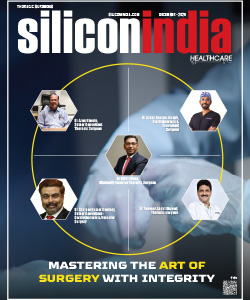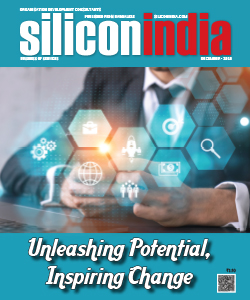Zero Trust - The 'Guardian Angel' for Modern Day Organizations against Cyberthreats

A master’s degree holder in Advanced Security & Digital Forensics, Robert is a passionate cybersecurity professional with over a decade of experience across diverse function within the information security realm. In a recent interaction with Siliconindia, Robert Haist, CISO & VP - Security, TeamViewer shared his insights on the emerging trends & practices in the cybersecurity vertical, along with prime emphasis on zero-trust approach. Read further to know more about this interesting topic
What are some of the key strategies organizations can implement for successfully implement zero-trust policies and mitigate cybersecurity risks?
Successful adoption of zero-trust framework demands collective efforts from various stakeholders of the ecosystem and cannot be achieved by a single player in the industry. Organizations can effectively tackle the challenge of increasing complexity of cyber threats by embracing a few stringent zero-trust principles to fortify their security posture. Firstly, cultivate a ‘never trust - always verify’ mindset each time you need to make a privilege or access-based decision. Also, always ensure to provide the least privilege possible and by default deny everything else. Additionally, companies must ensure to have complete visibility of every development or incident around identities and access to various resources both within & outside their network. Most importantly, they must have a centralized management system in place, without which zero trust adoption will be very difficult if not impossible.
Tell us about the key advantages of having central management systems in terms of maintaining security across various endpoints.
Since establishing and enforcing rules individually on each device can be time-consuming and prone to errors, managing security settings across a diverse range of devices can be a complex task without a centralized approach. The key here is to leverage central management systems that facilitate the creation and deployment of rules from a centralized point. Within the framework of zero trust, the significance of central management becomes apparent as it helps in crafting and enforcing security rules that help organizations to streamline operations and foster uniformity across all devices. Additionally, the central management aspect of zero-trust aligns with the philosophy of not trusting any device or user by default regardless of their location or previous access history enforces a uniform set of security policies, thus creating a cohesive defense strategy that spans the entire network. This approach is pivotal for maintaining a high level of security in today’s dynamic and interconnected digital landscape.
Briefly explain the importance of organizations securing their remote connectivity products against potential cyber-attacks.
In today’s digital era, organizations must prioritize empowering their customers with robust security controls to ensure the safe utilization of their products. A key facet of this strategy must involve implementing conditional access measures and strong authentication protocols, to fortify against unauthorized remote control from external sources. This not only verifies the identity of the user, but also allows for precise control over access privileges. By implementing these measures at the customers’ end, organizations can enable them to verify and regulate who interacts with their products. This approach not only enhances the overall security posture, but also aligns with the organization’s mission to provide a safe and secure user experience. Recognizing the importance of customers maintaining a robust identity and access management infrastructure can contribute to a well-managed identity framework on the customer’s end. This involves implementing stringent controls over user identities and access permissions. In the authentication and access control strategy, organizations must place a strong emphasis on utilizing a Single Sign-On (SSO) scheme that is meticulously managed and upholds verified identities. In essence, the organization’s approach centers around fostering trust.
How can organizations ensure data encryption across all their remote connectivity products to safeguard the confidentiality and integrity of customer/user information?
I personally believe that having both authentication and end-to-end encryption form the foundation for a secure connection. This serves as a robust line of defense, adhering to the principle of maintaining small, interconnected devices, which helps further avoid the opening-up of networks while fostering direct connections between devices. In the realm of zero trust, where numerous devices connect to services or other devices from disparate locations such as a train or a coffee shop, organizations must focus on facilitating secure connections without the need for a VPN. This enables device-to-device connections with stringent rules and robust authentication, eliminating the necessity for traditional network integration.
Read More News :
Government's Role in Strengthening Cybersecurity in Healthcare
Increased Adoption of Digital Transformation in the Government Sector

.jpg)


.jpg)
.jpg)